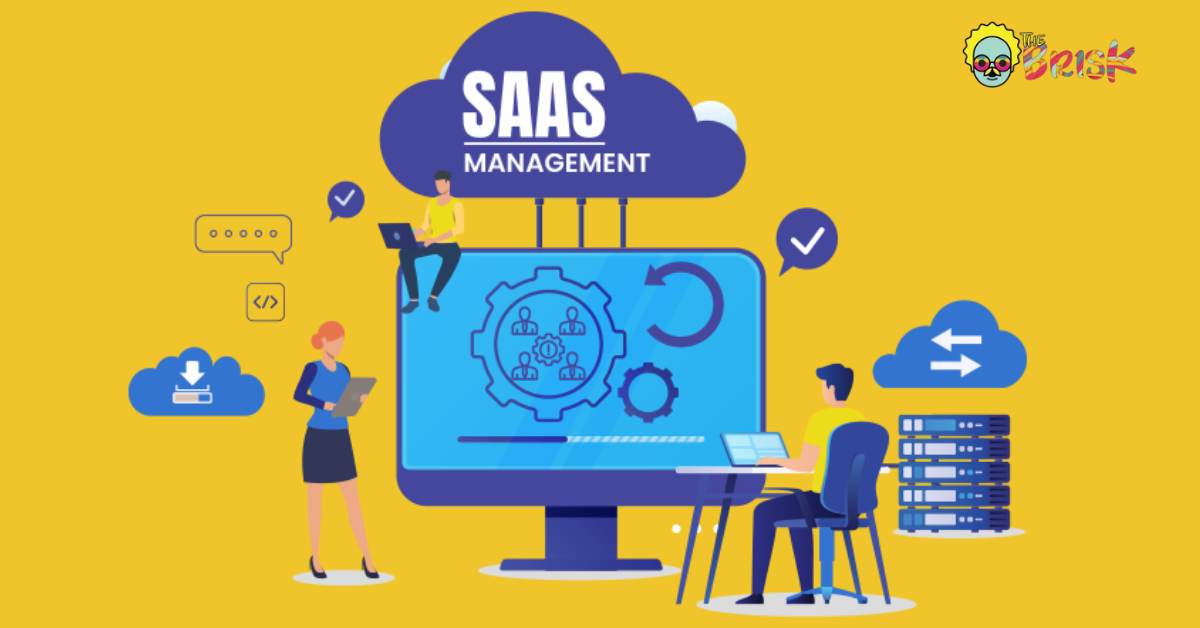Definition
SaaS management is the process of determining which apps and tools your team employs and who employs them. It also entails having a broad and deep understanding of your company’s entire software stack, which includes:
- Application usage and spend management
- Compliance
- Quick and effective response when you need to change software, end-users, or vendors.
With the right SaaS management solution in place, you’ll have a better understanding of your entire operation. With this solution, you can run employee and vendor management more efficiently, conduct in-depth compliance audits, and maximise your ROI. It’s never too early to start thinking about SaaS management.
Instead of waiting until your team is juggling dozens of tools, starting early can help you establish processes and best practices across your organisation.
Every SaaS management use case is covered by the Brisk, including:
- commercial operations
- Onboarding and offboarding of employees
- Optimization of SaaS Spend
- Security and compliance in SaaS
It accomplishes this through its system of record’ as well as its Workflow and Automations. In other words, with its right-size pricing, it simplifies your entire SaaS portfolio.
Necessity Of Saas Management
The importance of SaaS management for you is determined by your position in the company. A CEO or business owner, for example, should be concerned about SaaS management because it affects their bottom line.
If you’re an IT leader, you’d want a SaaS management solution to manage and secure your cloud applications. And if you work in human resources, you’d be interested in SaaS management to automate provisioning and de-provisioning tasks.
In short, SaaS management lowers your business costs, aids in the security of your data and company, and improves business operation efficiency and productivity.
Challenges
SaaS adoption is accelerating across all sizes and types of businesses. The average company now pays 20 times more for SaaS subscriptions than it did five years ago, and it uses three times more free SaaS products than paid apps.
SaaS has spread to all functions and departments. Non-engineering SaaS spending has risen from around 10% in 2010 to more than 80% today.
Because of the surge in SaaS adoption, software environments are becoming increasingly complex, posing new challenges in SaaS management, such as:
1. Added Complexity
Because of the proliferation of SaaS, businesses are naturally investing in point solutions that can be disconnected from one another, creating silos and adding complexity to workflows.
Businesses frequently have to deal with inconsistencies in APIs and a lack of a clear or central hub for managing their SaaS applications. Sometimes tools don’t get along, and opportunities for synergy and productivity are lost.
2. Lack of Visibility
As you are probably aware, SaaS can spread quickly. Because teams can quickly add and remove apps, new ones may be in play each week.
It can be difficult for IT teams, procurement, or anyone in charge of tools to keep track of who is using what, when, and how. This is referred to as shadow IT.
This occurs when business units or individuals purchase software without the knowledge of the IT department.
3. Tool Overlap
As software management becomes more decentralised within an organisation, it is common to come across multiple SaaS tools with overlapping features.
Depending on the team or the use case, many organisations use a combination of joins: me, Zoom, GoToMeeting, WebEx, and Google Hangouts.
It may appear that there isn’t a single solution that does it all, so it may appear that you must have everything available whenever your team requires what a single solution provides.
Perhaps one tool provides good analytics while another provides better publishing capabilities. This overlap can quickly devolve into chaos and become prohibitively expensive to manage.
4. Human Resource and Finance Challenges
Assume you have no idea how many or what types of apps your company employs. In that case, forecasting the costs of new hires can be difficult because technology costs vary by department and role.
Hiring a marketing manager who will require five to ten very robust and specialised SaaS tools versus a customer success manager who will spend the vast majority of his time on just two or three platforms can result in significant cost differences.
Then there’s the issue of quickly onboarding each employee to the appropriate technology, which can be time-consuming and costly for the organisation.
5. Concerns About Security
So far, there has been little standardisation in terms of data security and compliance concerns for SaaS tools. Many apps, for example, use two-factor authentication.
However, not all of them enable it automatically, so users may ignore it or only use it with certain tools. It’s also difficult to determine who has access to which apps and where data flows.
As a result, there are times when introducing new SaaS tools into the organisation can increase your risk and expose you to cyberattacks, lawsuits, and other threats.
Best Practices For Saas Management
Fortunately, you don’t need a massive stack of additional software to manage your SaaS applications properly.
Blissfully was created to address the SaaS management issue by compiling a comprehensive inventory of free and paid SaaS applications used by all teams in your organisation.
Blissfully provides all the management tools you need to take control of SaaS chaos across your organisation by connecting app data with critical metadata on people and spending.
We can assist you in surfacing the apps that your teams enjoy using, as well as uncovering a few apps that you aren’t using but are still paying for.
- Simplifying onboarding
- Secure offboarding
- Facilitating security and compliance
- Managing vendors effectively
Best Saas Management Tools
If you’ve looked at SaaS management platforms before, you’re aware that they differ in terms of use cases, functionality, and cost. There are four major use cases for SaaS management solutions:
- SaaS Operations Management (SaaSOps Automation)
- SaaS Spend Management (Application Cost Optimization)
- SaaS Vendor Management (Licence Renewals, Subscription management)
- Shadow IT (Compliance, Application Security)
SaaS management tools can also be classified based on their features and functionality. These are some of the basic capabilities you’ll find in SaaS management platforms (but features vary from platform to platform):
- Application Discovery
- Application Usage Insights
- User Management
- Application Cost Optimization
- Licence Renewals
- Vendor Management
- Ensure Compliance
- SaaS Stack Security
The various SaaS management tools on the market cater to a wide range of use cases and price points. There is no one-size-fits-all saas management software. No platform works 100 percent perfectly for every company.
Zluri, Zylo, Productiv, Torii, Blissfully, BetterCloud, Basaas, NachoNacho, etc., are some SaaS management tools. You can choose ones that are a good fit for your specific needs.




No Comments